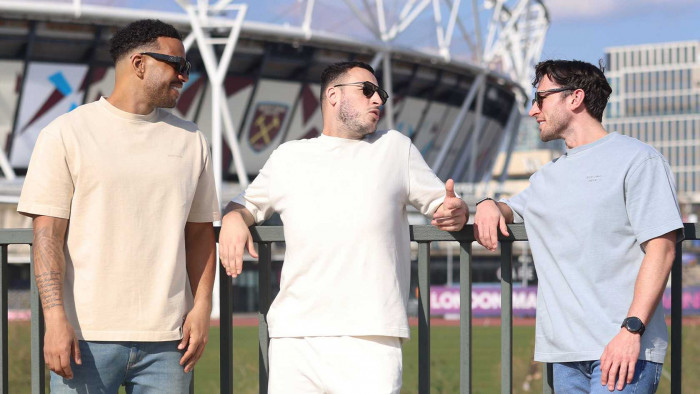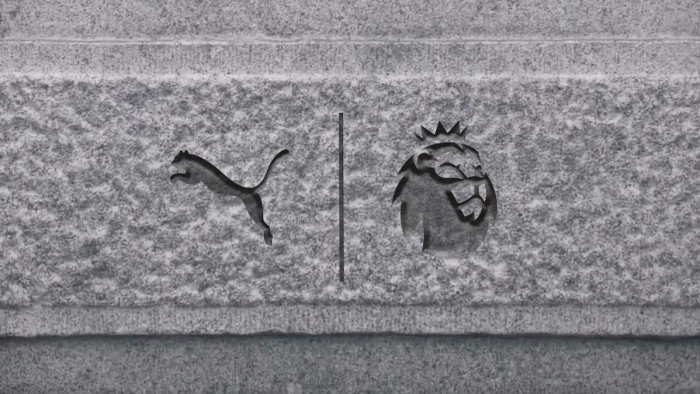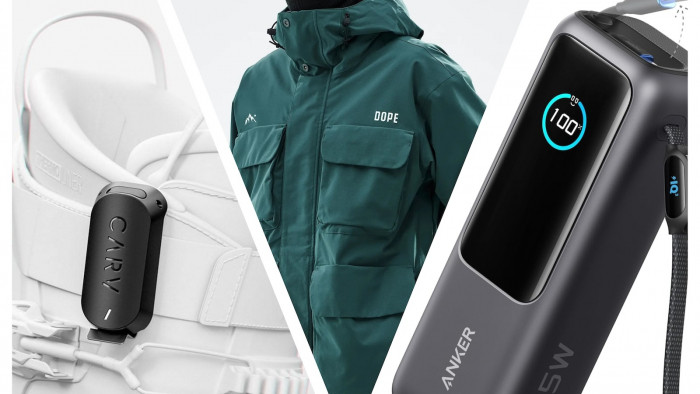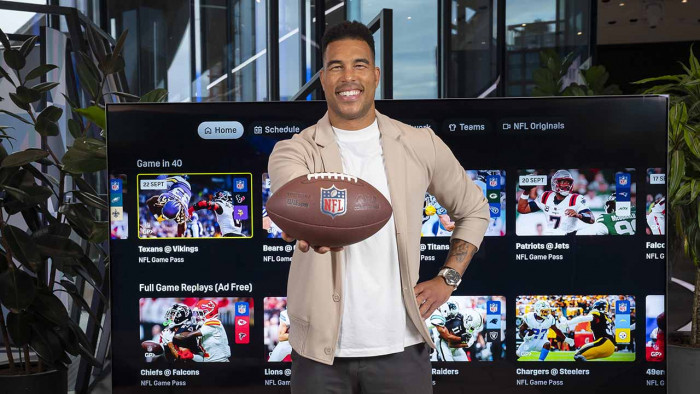The $47O Million match played by amateurs
College American football has huge stadiums and TV rights cost more per match than the Premier League. Ben Isaacs finds out why


It’s half-time in one of the biggest games of the night. A defending national champion team from Texas are comfortably beating the visitors from Florida. Somewhere in the crowd are representatives from teams playing at the next level, looking to get these stars wearing their colours when they’re old enough. The marching band comes out: all 700 of them. It’s the biggest in the country. The 18,000-capacity campus stadium, built at a cost of $60m (£39m) is nearly full. But this is just a high-school game, with the home team Allen Eagles beating the Viera Hawks.
Some players on the field in their final year of school have already committed to joining particular universities where their education will be free, they’ll be treated like gods, find themselves on TV and play in stadiums that make the one they’re in now look like a local park. They’re not even thinking about the NFL yet.
Just 24 hours later I’m at the most opulent sporting arena on the planet: AT&T Stadium in Arlington, Texas. It’s the home of the Dallas Cowboys, but tonight it’s hosting one of the weekend’s curtain-raising, neutral-site college games. Wisconsin are taking on perennial title contenders Alabama here and both sets of fans have turned out in force.

Those from the Deep South do things a little differently. That means many of the ’Bama faithful are young Southern gentlemen/belles who arrive ready to party and drink while wearing shirts and ties or evening dresses and high heels. If you saw someone standing and chanting at a Premier League game dressed like this you’d assume they’d suffered a mental breakdown.
“I think the attachment Europeans have to their soccer teams is probably the closest thing you’ll find to the connection college football fans have to their team,” says Rece Davis, the new host of ESPN’s College GameDay – think Soccer Saturday but filmed near stadiums with hundreds of fans waving signs and camping out the night before to get a good spot. “It’s not just an avocation, it’s a part of who they are. Is that bad sometimes? Maybe. Probably. But it also makes it great.”
And this is the reason why, according to The Wall Street Journal, ESPN is spending $5.64bn (£3.67bn) to televise the College Football Playoff (and four other end-of-season games) for 12 years ($470m per year). The College Football Playoff debuted last season and meant that finally, after nearly 150 years of the sport, it allowed an undisputed winner to be crowned. For decades the champion was decided by polling coaches and journalists, then they used a computer to choose the two best teams, so the more democratic four-team playoff has been a long-awaited change. And the money involved is huge. Sky’s Premier League deal costs £11m per match (BT’s cost £7m each); but ESPN is paying more than £43.6m per match for the end-of-season package.
How on earth can they make their money back on that? Because the fans are ultra-committed and the college game is like a religion. Around 33 million Americans watched the first ever College Football Championship game (which saw Ohio State beat Oregon) on ESPN in January of this year, making it the most-watched cable/satellite broadcast in US history. Sky’s most watched Premier League game last season drew just 3.1 million.
Go to a Notre Dame game. If you’re not hooked, I’ll give you back your ticket money
So if you consider college American football to be a lesser spectacle than the pro version, you’re sorely mistaken. “The NFL has a much more homogenised, sterile feel,” says Davis. “Their skill level is greater than that of the college players – no one disputes that. But if you go to an NFL game the atmosphere is very similar from one place to another. When you go to a college game, there are unique cheers, yells, traditions. Often the way a team comes on to the field is unique, such as when Virginia Tech plays Enter Sandman. When you hear the first few bars of that, the place goes nuts. At Wisconsin they start the fourth quarter by playing Jump Around and people lose their minds.”
The game between Alabama and Wisconsin proves to be entertaining, but as predicted by the ESPN guys I sit down with, the atmosphere is NFL-esque. The stadium is too perfect, too comfortable. Many rowdy students didn’t have the cash to travel. But even here, it feels like the fans are more attached to their players than in other sports. If you support a British football team, you know your star player could jump ship at any time or hold the club to ransom for more money. That’s not the case here. “The players have so much more pride in their teams,” says Kirk Herbstreit, a college quarterback who lived the dream by marrying a cheerleader and taking a job as a commentator at ESPN. “When you create that bond with teammates, those are memories you never forget, whether you go on to play in the NFL or you get a normal job.”

In other words, the players are loyal and love the team like you do. “Many Americans say the greatest sporting rivalry is New York Yankees vs Boston Red Sox but Roger Clemens and Jacoby Ellsbury played for both sides,” says Davis. “That happens in pro sports. The overwhelming majority of college players pick a side and they never change. They’re attached to it for the rest of their lives. Fans don’t change either.”
But it goes deeper than that. While behind the scenes at College GameDay, I was invited to meet country singer Brad Paisley, a guest on that week’s show to perform Country Nation, a surprisingly cogent take on identity politics. “We love to rally behind something, and in this politically correct world there are a lot of things we’re struggling with in terms of ‘who are we?’,” says Paisley. “But it’s fine when you can say, ‘I’m a [West Virginia] Mountaineer, I’m a [TCU] Horned Frog, I’m a [Tennessee] Volunteer.’ For the NFL you wouldn’t necessarily say: ‘I’m a [Pittsburgh] Steeler.’ You’d just say: ‘I’m a Steelers fan.’ It’s a shared experience that brings a lot of us together, and it’s an important part of US identity and tribalism. It’s a chance to be part of something much bigger.”
And I wanted to be part of something bigger. Go to Virginia Tech’s home game against last season’s champs Ohio State on Monday, they all said. So I did.
The game was kicking off at 8pm on Labor Day Monday, so fans tailgate from breakfast time onwards – ie grill meat and serve drinks out of the back of their vehicles in the car parks. It’s as big a part of the sport as the game itself and people take it seriously; planning menus weeks in advance. Some even have big TVs and portable satellite dishes attached to the car roof so they can watch the pre-game build-up. I eat a moonshine-soaked raspberry and it‘s awful. But the game is mostly outstanding as the unfancied home team end the first half in front, before some individual moments of genius let the champs run out winners. The away fans, spread throughout the stadium, are loud and taunt the home supporters, but no violence ensues. Some 10.5 million people watch at home on ESPN – the average Premier League match on Sky draws 1.5 million. Lane Stadium is packed to the brim, although a fan behind me says it’s not a very big place because it only holds around 66,000. He may have a point. After all, 11 colleges have stadiums bigger than Wembley.
As I leave, I promise the fans I’ve met I’ll be back for a game again soon. Gene Wojciechowski, senior national columnist for ESPN.com, says no one ever goes to a game without becoming addicted. “It’s like us learning to love the Premier League. We know that if you give it a chance, you’ll end up hooked. Come to a Notre Dame game, spend a day there and at the end of that if you’re not hooked, I’ll give you your money for the ticket,” he challenges ShortList readers. “Or a Tennessee game where there’s 100,000 people on the Tennessee River on a sun-kissed fall day. Tell me you won’t get hooked on that. Or a Texas vs Oklahoma game in the Cotton Bowl where they split the stadium down the middle. It’s impossible not to get into it. Go to an LSU [Louisiana State University] game at night. Although you might need to check into the Betty Ford clinic afterwards.”
ESPN Player has more than 700 NCAA football games this season, including the College Football Playoff; espnplayer.com
Latest
Related Reviews and Shortlists









